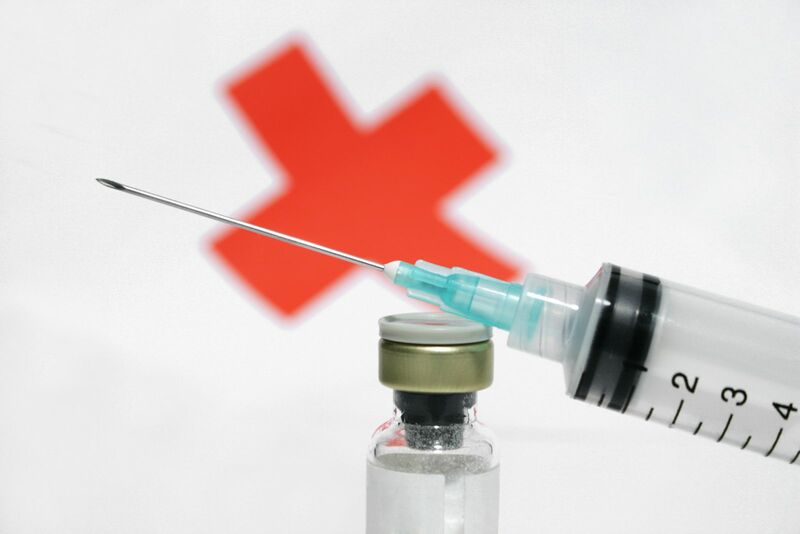
The spread of COVID-19 showed that the ability to quickly roll out a vaccine can be a very profitable business. However, it can also be a pretty tough business. Moderna (MRNA) recently reported that it swung to a loss, and reported huge write-downs on unused supplies of its coronavirus shot.
Nevertheless, one company - GSK PLC (GSK) - is pinning its hopes for medium-term growth on vaccines for other viruses. Let’s take a closer look at GSK, which is much more than just a vaccines company.
GSK’s Vaccine Winners
It was a landmark year in 2022 for GSK, formerly known as GlaxoSmithKline. Following the demerger of its consumer healthcare business, Haleon (HLN), in July, it is now a fully focused biopharma company. Its focus is on four therapeutic areas: infectious diseases, HIV, respiratory/immunology, and oncology.
Some key drugs in GSK’s lucrative portfolio of HIV treatments are due to go off patent before the end of the decade. This means the company is under pressure to build new revenue streams from its drug pipeline. So, it would boost GSK's fortunes if the company could come up with some winners from one of its areas of expertise, vaccines.
If there was one lesson learned from the pandemic, it’s that the vaccines with the best safety and efficacy profiles tend to dominate in terms of market share. Fortunately, GSK seems to be getting good news on this front.
Preliminary research has indicated that its RSV vaccine, Arexvy, offers more durable protection (two years versus one year) against the virus than Pfizer (PFE)’s rival Abrysvo, which also received regulatory approval from the FDA in May.
RSV, or respiratory syncytial virus, causes infections of the lungs and respiratory tract, and is so common that most children have been infected with the virus by age 2. The bug can cause severe infection in babies 12 months and younger, older adults over 60, people with heart and lung disease, or anyone with a weak immune system.
GSK’s third-quarter figures showed demand for Arexvy was stronger than expected in the U.S. The company said its shot made up two-thirds of retail vaccinations (i.e. those offered in pharmacies) in the U.S. during the third quarter.
Notably, Arexvy was the only RSV shot being offered by CVS Health (CVS), the largest domestic pharmacy chain. This explains, at least in part, how the GSK vaccine was able to garner about $860 million in sales during the third quarter. In comparison, Pfizer’s Abryso vaccine for RSV garnered only $375 million in sales.
GSK’s management forecasts that Arexvy could generate peak annual sales of £3 billion ($3.8 billion) towards the end of the decade. This would be ideal timing for the company, as its key HIV treatment, Dolutegravir. is due to go off patent in the U.S. and Europe in 2028 and 2029, respectively.
The company also has a highly successful shingles vaccine, Shingrix. Sales of the shingles shot climbed in the most recent quarter, bringing in more than $1 billion in sales. This represents a 15% increase — at constant exchange rates — from the same period last year.
And on Oct. 9, GSK signed a deal with Zhifei, China’s largest vaccine company by revenue. Zhifei agreed to buy about $3 billion worth of Shingrix (which is targeted at older adults) over three years. This partnership “materially expands” the number of Chinese adults who would benefit from Shingrix. By 2030, there will be about 570 million adults over the age of 50 in China, but as of June 2023, only around 1.2% had been vaccinated against shingles.
GSK’s ultimate goal is to double global sales of its shingles vaccine by 2026. This seems reasonable, since Shingrix has yet to be rolled out to many international markets.
Arexvy and Shingrix contributed heavily to the total revenue of GSK’s vaccine business, which in the third quarter came in at $3.9 billion. This corresponds to 33% growth versus the third quarter of 2022. GSK’s total third-quarter sales amounted to $9.89 billion, a 10% increase from the same period in 2022. Without taking into account its COVID-19 business, revenue growth was at 16%.
In view of this strong performance, GSK raised its guidance for 2023. The company now expects turnover to increase from 12% to 13%, up from the previously announced 8% to 10%. It also now anticipates an adjusted operating profit growth of 13% to 15%, up from 11% to 13%.
Why GSK Looks Like a Buy
The aforementioned spin-off of Haleon gave GSK a roughly $8.5 billion payout that it has already put to use, when it agreed to a $2 billion deal for the late-stage Canadian biotech business Bellus Health in April. The acquisition provides GSK access to camlipixant, a potential best-in-class and highly selective P2X3 antagonist that's currently in phase III development for the first-line treatment of adult patients with refractory chronic cough (RCC).
GSK is also making progress on the Zantac/cancer lawsuits front. It has already settled a handful of cases. The next major hurdle will be at a hearing in January over the bulk of the remaining cases - about 73,000 from an outstanding 79,000.
These lawsuits, and the misperception on Wall Street regarding GSK’s lack of a drug pipeline, has resulted in the stock doing very little for years. It's down 5% over the past three years and up 5.5% over the last year.
Finally though, the company is getting its act together, and is outperforming the likes of Pfizer and Merck (MRK) over the past year. And GSK offers a 3.8% dividend yield, too.
GSK stock is a buy in the mid-30s, and my expectation is for a 50% gain within 18 months.








